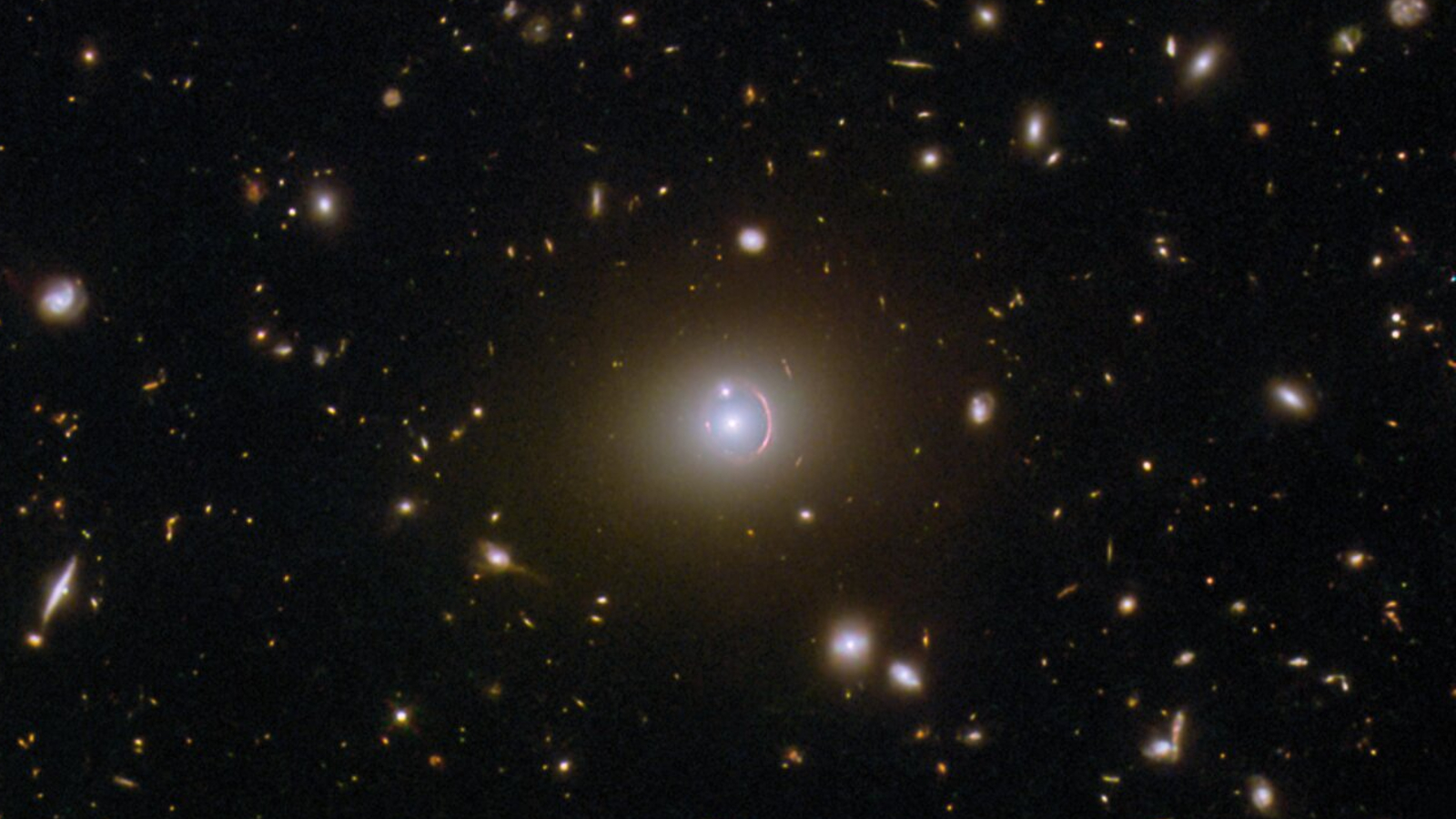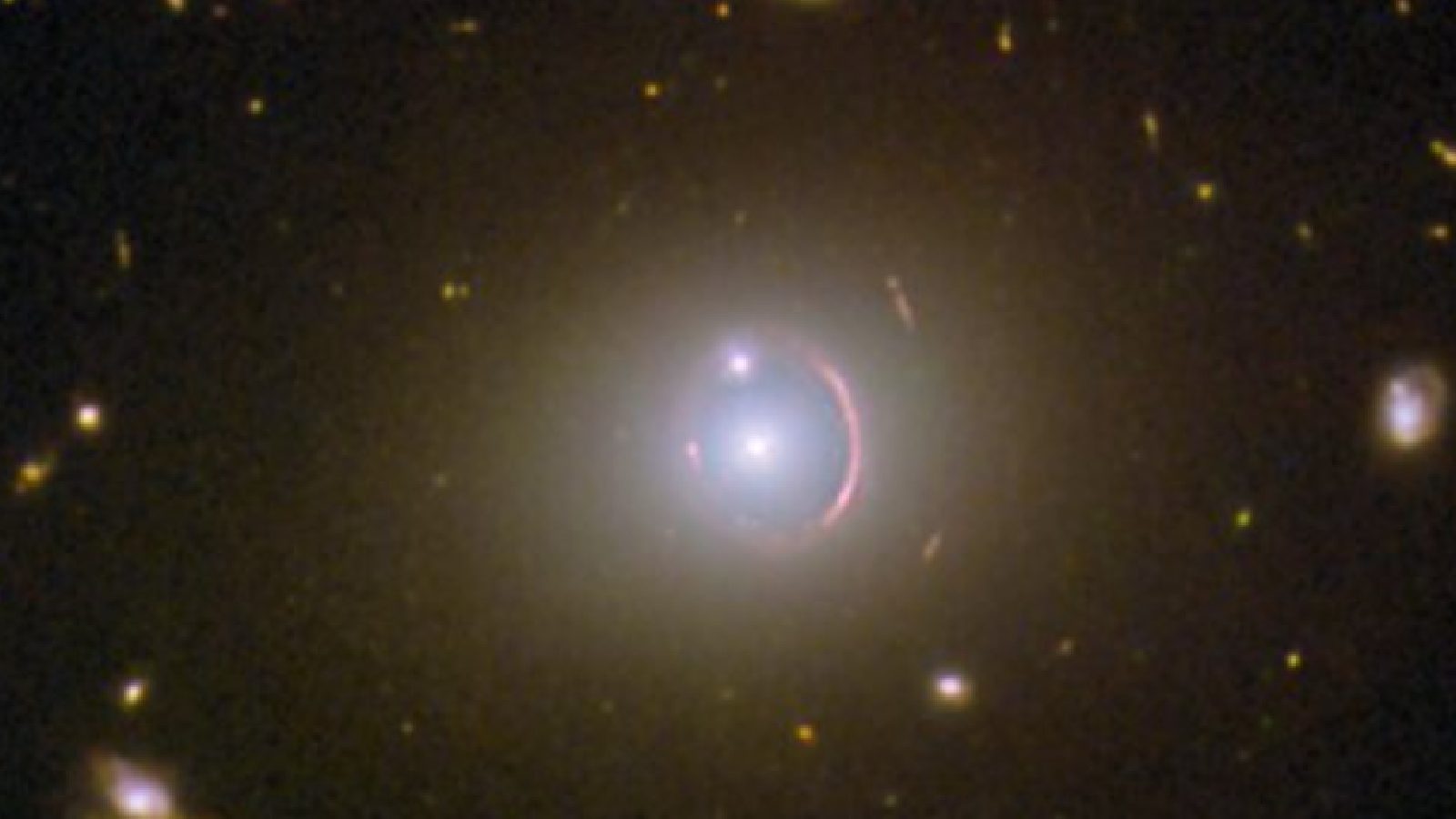Stunning 'Einstein engagement ring' from the early universe is one of the oldest ever discovered
The Hubble Space Telescope has snapped a stunning photo of one of the most distant Einstein rings ever found. The luminous halo of light aligns perfectly with another galaxy, making it look like a cosmic engagement ring.

The Hubble Space Telescope recently snapped an extremely rare, near-perfect ring of gravitationally warped light, known as an "Einstein ring," shining from a galaxy in the early universe. The luminous halo lines up perfectly with another galaxy, making it look like a diamond-studded engagement ring.
Einstein rings occur when light from a distant galaxy is bent around a closer galaxy or black hole that is perfectly aligned between the distant object and the observer. This bending effect, known as gravitational lensing, is caused by light passing through space-time that has been warped by the immense gravity exerted by the foreground object. The light travels in a straight line through the curved space-time, making it appear as if it were arching around the foreground object.
In addition to bending the light, gravitational lensing magnifies it, allowing astronomers to spot distant objects that would otherwise be almost invisible to us. This effect was first predicted by Albert Einstein's theory of relativity, which is what gives the cosmic circles their name.
In the new photo, the light of the Einstein ring, named HerS J020941.1+001557, comes from a galaxy located around 19.5 billion light-years from Earth. It has been lensed by a foreground galaxy, named SDSS J020941.27+001558.4, around 2.7 billion light-years away, which is the bright dot at the center of the ring. A third non-lensing galaxy, J020941.23+001600.7, aligns perfectly with the halo of light, making it look like an affixed gemstone.
HerS J020941 was first discovered in 2015 by the citizen science project Space Warps, but the new Hubble image shows it in a much higher resolution.
Related: Stunningly perfect 'Einstein ring' captured by James Webb Space Telescope

The galaxy emitting the Einstein ring is so far away that you might think its light should not be visible to us; at more than 19 billion light-years away, the light appears older than the universe itself, which is thought to be roughly 13.8 billion years old. However, due to the expansion of the universe, the galaxy has moved away from us while its light has traveled toward us. The light we see was first emitted from the galaxy around 11.2 billion years ago. As a result, the light has a red hue because it has been stretched out by cosmic expansion — a phenomenon known as red shift.
Sign up for the Live Science daily newsletter now
Get the world’s most fascinating discoveries delivered straight to your inbox.
HerS J02094 is one of the oldest Einstein rings ever spotted, but we have seen even more distant examples. Last year, the James Webb Space Telescope (JWST) spotted an Einstein ring around 21 billion light-years from Earth.
Einstein rings are a key area of study for astrophysicists because they can help shed light on dark matter — the invisible matter of unknown origin that makes up around 85% of the universe's mass. By measuring the size of the luminous halos, researchers can analyze the mass of the foreground galaxies, which allows them to calculate the discrepancy between their estimated mass (based on the number of stars the foreground galaxies hold) and their actual mass. That difference is caused by the presence of dark matter.
In the coming years, JWST should help astronomers find more Einstein rings from the early universe, which will help shed even more light on the dark matter problem.

Harry is a U.K.-based senior staff writer at Live Science. He studied marine biology at the University of Exeter before training to become a journalist. He covers a wide range of topics including space exploration, planetary science, space weather, climate change, animal behavior and paleontology. His recent work on the solar maximum won "best space submission" at the 2024 Aerospace Media Awards and was shortlisted in the "top scoop" category at the NCTJ Awards for Excellence in 2023. He also writes Live Science's weekly Earth from space series.










